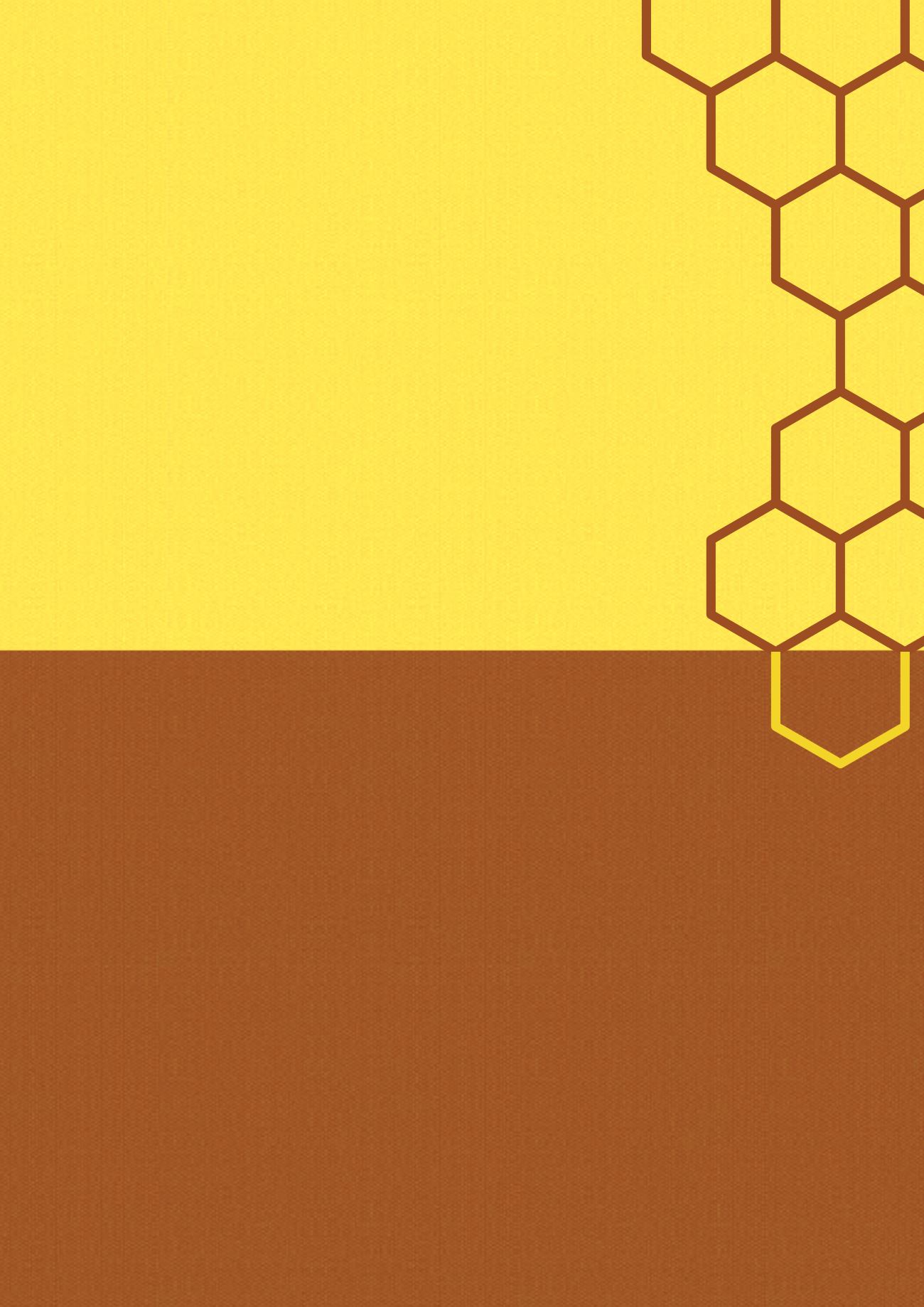
By
Fung Wai Kit
馮偉傑
(La Salle College, F5)
Heung Yat Hei
鄉逸熙
(St Mark’s Schoo
l
, F5)
Tang Yu Kiu Yuki
鄧宇喬
(SKH Kui Ming Choi Secondary School, F5)
Yam Yan Kiu
任恩翹
(Pui Ching Middle School, F4)
References
[1] Losey, Vaughan (2006). The Economic Value of Ecological Services Provided by Insects. Retrieved from
-
content/uploads/2008/09/economic_value_insects.pdf
[2] Cox-Foster et al. (2007). A Metagenomic Survey of Microbes in Honey Bee Colony Collapse Disorder. Retrieved from
sciencemag.org/content/318/5848/283.full
[3] Sagili RR, Pankiw T, Metz BN (2011) Division of Labor Associated with Brood Rearing in the Honey Bee: How Does It Translate to Colony
Fitness? PLoS ONE 6(2): e16785. Retrieved from
蜜蜂費洛蒙
17
capable of reproduction. QMP affects behaviors,
including hive maintenance, swarming, mating,
and even the ovary development of worker bees.
An o t h e r t y pe o f ph e r omo n e t h a t ca n
significantly affect hive dynamics is the brood
pheromones produced by larvae. This pheromone
assists nurse bees in recognizing the gender, type,
and needs of larvae, so that the most appropriate
food and care can be provided. A recent study
suggested by adding a low concentration of brood
pheromone to a hive, the “division of labour” can
be altered such that worker bees spend more time
foraging and be enlisted in the “work force” at
an earlier age. Increase in foraging effort, in turn,
boosts colony growth [3]. Brood pheromone is not
used in commercial bee-keeping yet, however,
it could potentially be a new tool to combat the
decline in bee populations.
Can pheromones alone
be the solution to the decline
of t he bee popu l at i on?
Probably not. Though, the
engineering of pheromones
may be ab l e to he l p the d i re
situation, along with responsible
and proper use of pesticides. The
exponential growth of the human
population has caused exceeding
disturbance to the ecosystem in
many aspects. An estimated 100,000
species become extinct each year,
affecting food chains and causing
turbulence in intricately balanced
biological systems. It is high time that
we learn to leave room for other
animal species, especially, bees.
的費洛蒙。女王下頜費洛蒙 (QMP ) 是最為人熟知的費
洛蒙。QMP由羧酸和芳香族化合物組成,由蜂后分泌。
蜂后是全蜂窩裏唯一有生育能力的蜜蜂。QMP影響到蜂
群的行為,包括蜂巢維護、蜂擁、交配,甚至於工蜂的
卵巢發育。
育雛費洛蒙是另一種可顯著影響蜂巢動態的費洛
蒙,由蜜蜂幼蟲分泌。育雛費洛蒙有助育幼蜂辨識蜜蜂
幼蟲的性別、種類以及需求,令到蜜蜂幼蟲能得到最適
當的食物和照顧。近期的研究結果建議添加少量的育雛
費洛蒙,就可以令工蜂延長覓食時間,以及較早加入
「勞動隊伍」。這兩項因素有利蜂群增長[3]。養蜂業目
前還未曾使用育雛費洛蒙,但這或可助制止蜜蜂種群下
降。
單靠費洛蒙恐怕不能阻止蜜蜂種群下降的現象。但
是費洛蒙的開發,再加上以負責任的態度正確使用農
藥,應可有助解決這嚴重問題。人類群體正以幾何級數
增長,漸漸在多方面干擾生態系統。我們每年面對約10
萬物種損失,影響食物鏈,破壞生態系統平衡。當下我
們必須要學會如何為其他物種 (尤其是是蜜蜂) 留下空
間。


